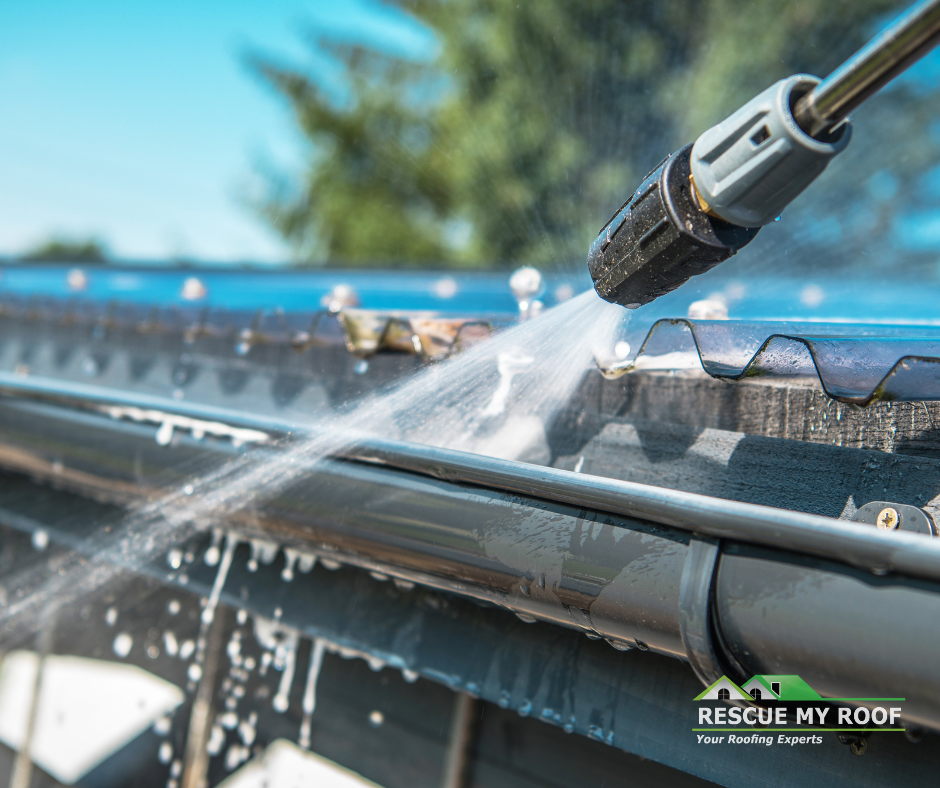Can I Pressure Wash A Flat Roof? (Best Practices)
Flat roofs are a popular choice for many homeowners and commercial property owners due to their modern aesthetic and space-saving design. However, like any roofing material, flat roofs require regular maintenance to ensure longevity and optimal performance.
One common question that arises is whether pressure washing is a suitable method for cleaning flat roofs.
Rescue My Roof has been a leader in the roofing industry for over a decade, helping homeowners keep their roof in top condition.
In this article, we’ll explore the pros, cons, and best practices of pressure washing a flat roof to help you make an informed decision. Ultimately, you’ll know the best practices for keeping your flat roof clean.
What is Flat Roof Maintenance?

Flat roofs are prone to collecting debris, dirt, algae, and other organic matter over time, which can compromise their appearance and structural integrity if left unaddressed. Regular cleaning is essential to remove debris and prevent potential damage to the roof membrane.
Cleaning your flat roof – making sure it is clear of debris with a soft broom – should be done twice a year in the spring and fall.
Cons of Pressure Washing

For homeowners who want an easy solution, they may be tempted to pressure wash their roofs. However, pressure washing a flat roof is not recommended, as it can cause damage and premature aging.
Here are some disadvantages of pressure washing flat roofs homeowners should be aware of.
1. Risk of Damage
High-pressure water can damage flat roof membranes, especially if they are old, brittle, or already compromised. Improper technique or excessive pressure can lead to leaks, tears, and other costly repairs.
2. Potential for Water Intrusion
Pressure washing can force water underneath the roof membrane, leading to leaks and water damage inside the building.
3. Environmental Concerns
Pressure washing may dislodge pollutants, chemicals, or contaminants from the roof surface, posing environmental risks if not properly managed.
Best Practices for Pressure Washing a Flat Roof
Since pressure washing your flat roof is out of the question, here are some best practices for cleaning your roof:
- Use Low Pressure: Opt for low-pressure washing equipment and techniques to minimize the risk of damage to the roof membrane. Avoid high-pressure settings, especially on older or fragile roofs.
- Test in a Small Area: Before pressure washing the entire roof, test the equipment and technique in a small, inconspicuous area to assess its effectiveness and impact on the roof surface.
- Avoid Harsh Chemicals: Use mild, environmentally friendly cleaning solutions when necessary to supplement pressure washing. Avoid harsh chemicals that can damage the roof membrane or harm the environment.
- Work with Professionals: Consider hiring professional roof cleaners who have experience with pressure washing flat roofs. They can ensure proper equipment, techniques, and safety measures are used to minimize risks and achieve optimal results.
Cleaning Your Flat Roof
While pressure washing can be an effective method for cleaning flat roofs, it’s best to use more gentle methods, like a broom, to minimize the risk of damage.
Or, when in doubt, consult with roofing professionals who can provide expert guidance and recommend the most suitable cleaning methods for your flat roof. By taking a cautious and informed approach, you can maintain a clean and well-maintained flat roof that enhances the aesthetic appeal and longevity of your property.
Learn more about flat roofs with “How Professionals Repair Flat Roofs: The 7-Step Guide” and “Can You Install A Flat Roof in Winter?”
Are you looking for flat roof repair or replacement in southeastern Wisconsin? Rescue My Roof can help. Contact us today to get a free estimate.


